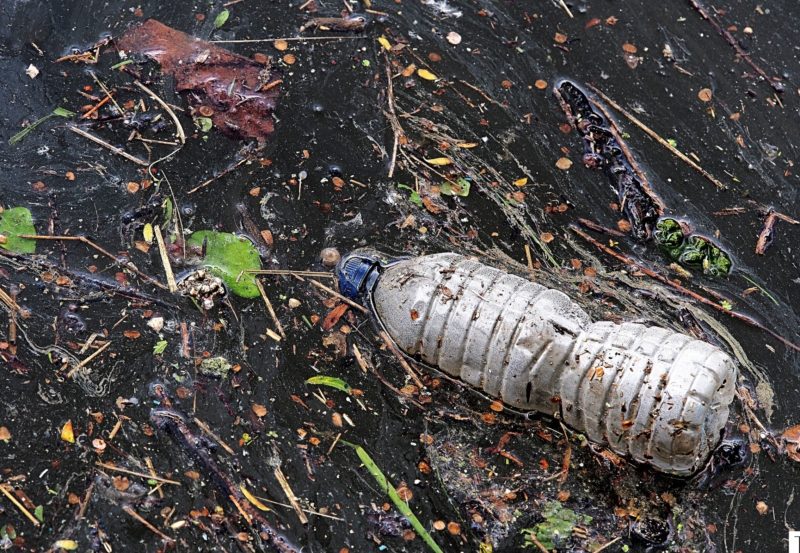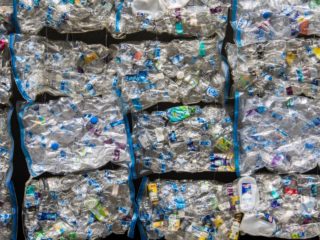Wondering what the heck is the difference between biodegradable vs compostable bags, cups, utensils, plates, etc.? And what does “biodegradable” mean? “Compostable”? Are they really environmentally-friendly products or is it simply greenwashing?
I’ve wondered myself and done some research on the subject. Surprisingly, the terms are not one and the same. There’s actually an important distinction and I’ll walk you through the details.
Table of Contents
Definitions: Biodegradable vs Compostable
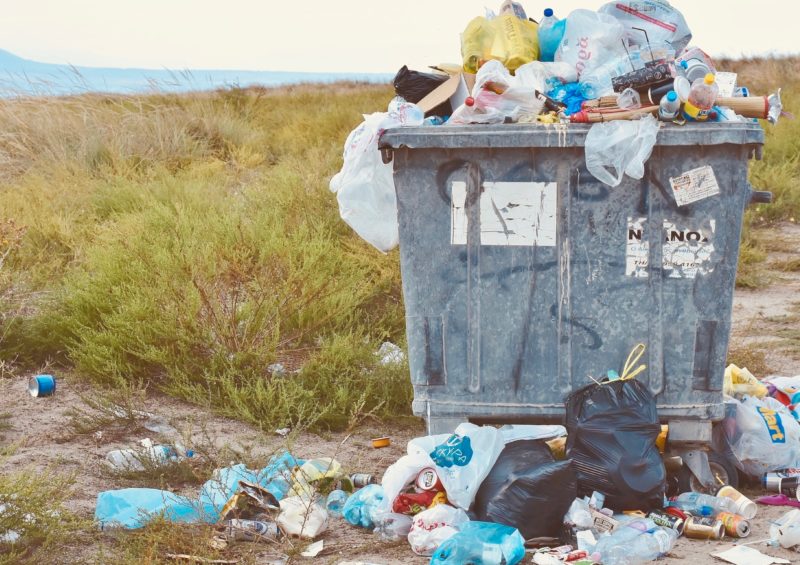
Although you may think they’re identical, biodegradable vs compostable definitions are uniquely different when we’re considering consumer products.
Biodegradable. This, according to the American Society for Testing and Materials (ASTM), is an item that undergoes degradation resulting from the action of naturally occurring microorganisms such as bacteria, fungi, and algae.
A few other points that distinguish biodegradable from compostable items:
- Timing. A biodegradable product doesn’t specify the length of time it takes to degrade. But when you think about it, everything biodegrades over time. It’s just how long it takes that’s key. So if that plastic cup is labeled “biodegradable” it could take 1,000 years for it to decompose and technically the label would be correct. But it certainly wouldn’t help with our increasing waste problem!
- Method of Breaking Down. A biodegradable product doesn’t specify the type of environment in which it will break down.
- Confusion. In short, the product label “biodegradable” carries with it a lack of clarity. And for this reason, many items labeled “biodegradable” may be intentionally misleading and designed to greenwash the consumer.
Compostable means that within a compost environment, a product can break down into natural elements (carbon dioxide, water, inorganic compounds and biomass) in around 90 days.
What’s a “compost environment”? As explained by World Centric, it’s typically a commercial facility that adheres to the following set of criteria:
- Timing. The product must achieve 90% disintegration in around 90 days.
- Disintegration. The product must demonstrate a 60% conversion to carbon dioxide within 180 days.
- Toxicity. The product leaves no toxicity in the soil.
Now that you understand the distinction, let’s take a look at biodegradable vs compostable products so you can identify and purchase those that are truly green.
Biodegradable vs Compostable Products
I’ve covered definitions of biodegradable vs compostable. Let’s clear up the confusion on product selection.
Labels
Biodegradable. “Biodegradable” labels are a red flag to shoppers. Your greenwashing antennae should be up! Unless the decomposition time frame is clearly stated and certified by a reputable organization, this product could actually take years to break down and has no environmental benefits.
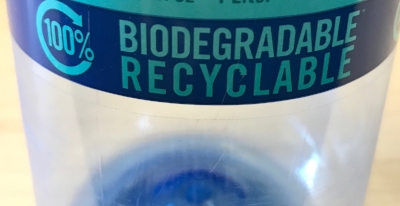
An example: ECM Biofilms Inc. was slapping labels on their bottles claiming that they were “100% biodegradable”. The Federal Trade Commission ultimately found that ECM’s claims were deceptive and false, but it’s difficult to crack down on all bogus claims by wily manufacturers. It’s important for consumers to stay alert!
Here’s a helpful list, thanks to Eco-Cycle, of other labels that are not certified compostable:
- Made from plants
- Made from plant starch
- Oxo-degradable
- Bio
- Eco-friendly
- Earth-friendly
- Made with recycled content
- Green
Compostable. The safer alternative is to purchase items with a certified “compostable” label. Look for any or all of this information on clearly marked labels:
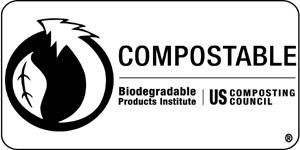
- Certification from the Biodegradable Products Institute.
- American Society for Testing & Materials. Language that specifies the product meets standards set by ASTM International (ASTM D6400 and/or ASTM D6868).
- #7 PLA Compostable. This means the product is made from poly-lactic acid (i.e., corn).
- Ingeo. This is the brand of PLA plastic and is 100% compostable in commercial compost facilities.
- European Standardization Committee. Look for the label EN 13432.

How Do I Compost Compostables?
Be warned! Just because a product is labeled “compostable” doesn’t mean it’ll break down rapidly if you toss it in the garbage. Most likely you’ll need to dispose of it in a commercial composting facility.
To get an idea of what can and can’t be composted in a commercial facility, I like these visual depictions from Ulster, NY’s commercial composting guide, and Sustainable Materials Management’s guide. Here’s another from CRP Sanitation in Cortlandt Manor, NY.
In short, compostable products won’t degrade rapidly unless they’re disposed of in a commercial compost facility. Do not put them in the trash or recycling bin.
Guides, Standards, Studies
Here’s a list of guides and standards so that you can be well informed!
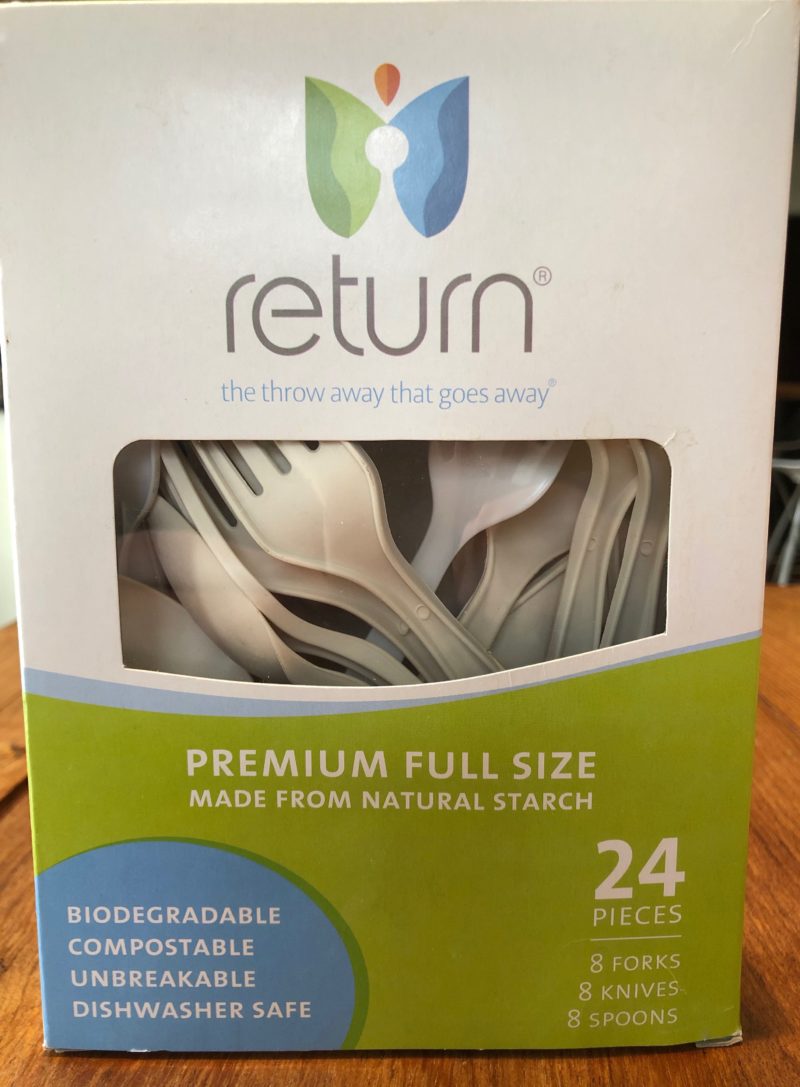
- Biodegradable Products Institute. The website has a handy search function to search for certified compostable products.
- Plastics BAN List 2.0. This is an excellent study that tests the degradation of a wide variety of products. A must-read, even if you just check the results, which are presented with clear visuals.
- ASTM International. This is the organization that sets composting standards. Worth a scan.
- EcoCycle Guide for Food Services. More for ordering in bulk, but I like its overview of types of products and what they’re made from.
- Federal Trade Commission Green Guides. The FTC’s Green Guides are meant to provide guidelines on what claims can be made regarding biodegradable vs compostable plastics.
Compostable vs Biobased Products
Biobased products are made mostly or entirely from plant materials. Just because they’re made from plant materials doesn’t mean they’ll decompose rapidly. Unless it’s specified on the product, these items aren’t necessarily compostable. So who knows how long the product will actually take to break down?

